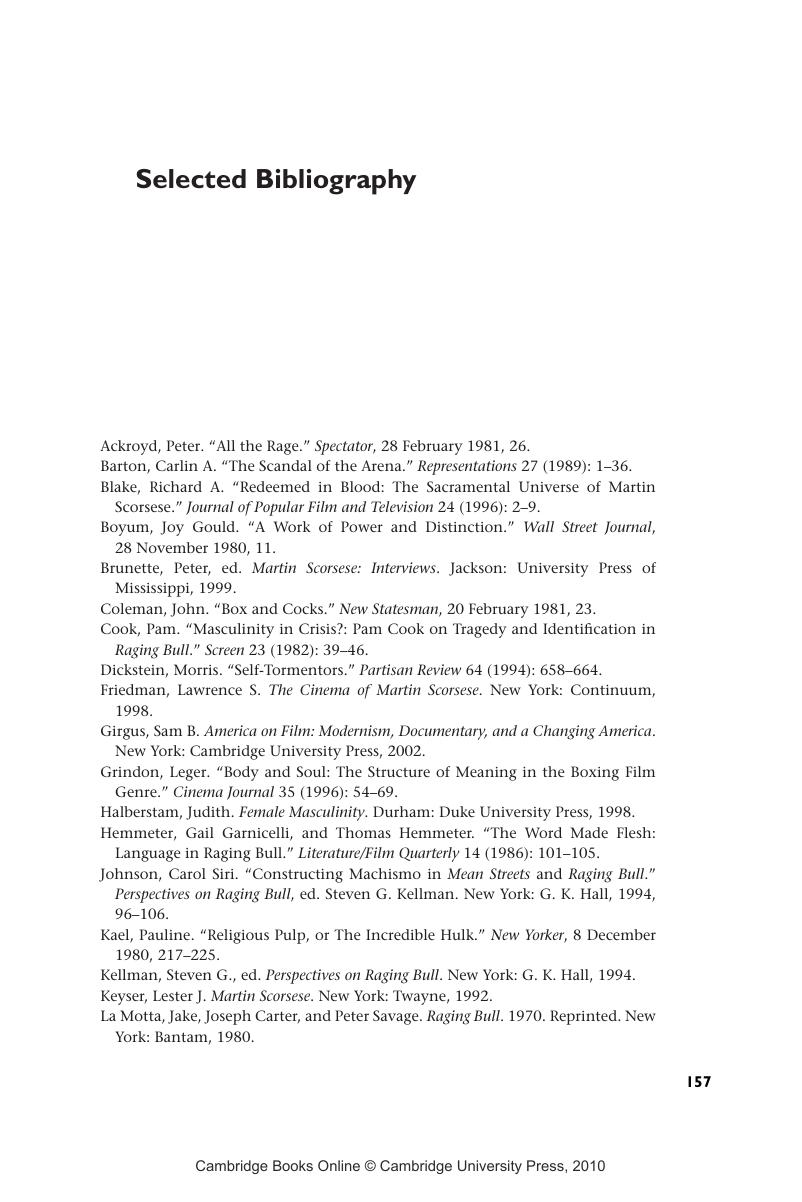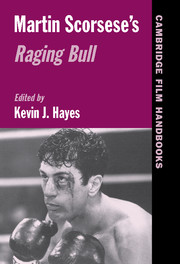Book contents
- Frontmatter
- Contents
- List of Illustrations
- List of Contributors
- Abbreviations
- Introduction: The Heritage and Legacy of Raging Bull
- 1 Art and Genre in Raging Bull
- 2 Visual Absurdity in Raging Bull
- 3 Raging Bull and the Idea of Performance
- 4 Women in Raging Bull: Scorsese's Use of Determinist, Objective, and Subjective Techniques
- 5 My Victims, My Melancholia: Raging Bull and Vincente Minnelli's The Bad and the Beautiful
- REVIEWS OF RAGING BULL
- Filmography
- Select Bibliography
- Index
- References
Select Bibliography
Published online by Cambridge University Press: 24 November 2009
- Frontmatter
- Contents
- List of Illustrations
- List of Contributors
- Abbreviations
- Introduction: The Heritage and Legacy of Raging Bull
- 1 Art and Genre in Raging Bull
- 2 Visual Absurdity in Raging Bull
- 3 Raging Bull and the Idea of Performance
- 4 Women in Raging Bull: Scorsese's Use of Determinist, Objective, and Subjective Techniques
- 5 My Victims, My Melancholia: Raging Bull and Vincente Minnelli's The Bad and the Beautiful
- REVIEWS OF RAGING BULL
- Filmography
- Select Bibliography
- Index
- References
Summary

- Type
- Chapter
- Information
- Martin Scorsese's Raging Bull , pp. 157 - 158Publisher: Cambridge University PressPrint publication year: 2005



